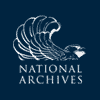Instructions to Virginia Delegates in re Artillery, [25 and 26 December] 1782
Instructions to Virginia Delegates in re Artillery
Printed text (, October 1782, pp. 81, 82).
Editorial Note
In response to a dispatch of 10 March 1782, in which Washington requested that Virginia lend or give artillery to the continental army, Governor Harrison in Council readily assented, provided that Washington “send for” the heavy brass siege cannon and replace them with “an equal number of pounds of field artillery” (, XXIV, 52–53; , III, 62; , III, 178). The commander-in-chief agreed and directed General Henry Knox, continental chief of artillery, to expedite the transfer, but by 9 July, after having conferred with General Benjamin Lincoln, secretary at war, Knox had seemingly concluded that the army would be the loser if the proposed exchange should be made (, XXIV, 112, n.; LC: Washington Papers).
Harrison, meanwhile, was finding that his original estimates of the number of siege cannon in Virginia had been exaggerated and that many of the pieces were at the bottom of the York, the Pamunkey, and other rivers. In compliance with directives from the executive and the House of Delegates, dated 25 February and 22 May, respectively, Colonel William Davies, commissioner of war, had been endeavoring to recover, assemble, repair, and render an accounting of Virginia ordnance and other military stores (, III, 50, 96; , p. 50; , III, 132, 151, 168–69). Although Davies on 7 June submitted a progress report, which Harrison laid before the House of Delegates, the work of locating and raising the submerged cannon continued throughout the summer and autumn of 1782 (ibid., III, 195, 289, 290, 304, 311, 341, 378; , III, 103, 122, 124, 218).
Finally on 25 November the House of Delegates revived the original issue by naming a committee, with Arthur Lee as chairman, “to prepare powers and instructions for the delegates of this State in Congress, to negotiate and exchange with the United States, the heavy brass cannon of this State, for brass field pieces and howitzers.” The report of the committee, submitted by Lee on 25 December, was adopted by the House on the same day and by the Senate on the next (, October 1782, pp. 36, 81, 82).
[25 and 26 December 1782]
Whereas, brass field pieces and howitzers, are immediately necessary for the militia of this State, and it is understood, that it will be advantageous to the United States, to exchange such field pieces and howitzers for heavy artillery, the delegates of this Commonwealth in Congress, are hereby empowered and instructed, to negotiate an exchange with the Congress of the United States, of heavy cannon for such field pieces and howitzers, with their carriages and accoutrements complete; and when they have obtained them, to concert with the Executive of this State the most immediate and effectual means of forwarding them to Virginia; and the Executive are desired to transmit to our delegates a list of such brass twenty-four and twelve pound cannon as belong to this State, for the purpose of such exchange; and also of such heavy iron ordnance as can be spared from the necessary defence of the State, by land and by water.1
1. Neither the file copy nor the recipient’s copy of these instructions, together with the accompanying “list” of cannon, has been found. Governor Harrison may have included the instructions and list among the copies of “several resolutions of the Assembly” which he sent on 4 January to the Virginia delegates (, III, 420). On 21 January 1783 the receipt of these papers was acknowledged by the delegates (MS in Virginia State Library), but there is no evidence that they either submitted the present instructions to Congress or endeavored “to negotiate an exchange.”

![University of Virginia Press [link will open in a new window] University of Virginia Press](/lib/media/rotunda-white-on-blue.png)
